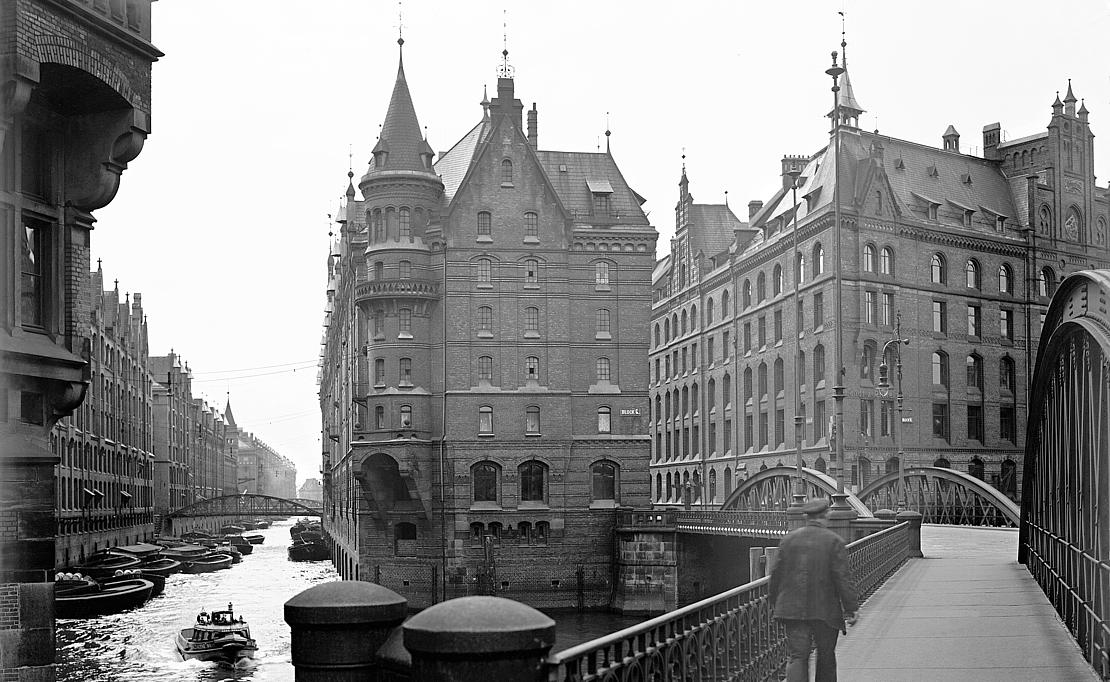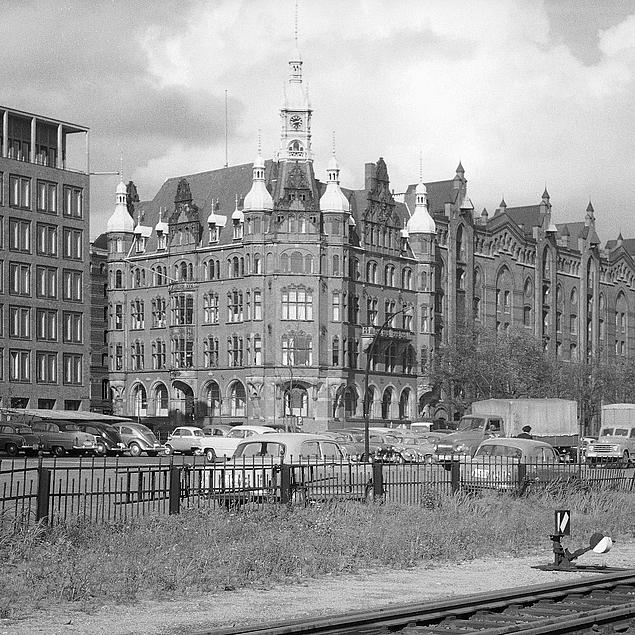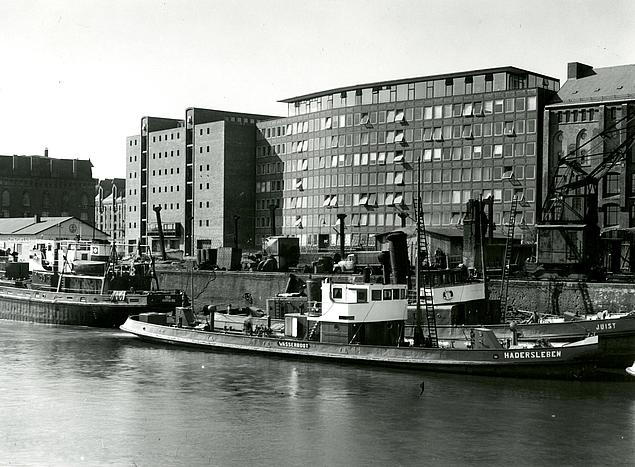Quicklinks
Quicklinks

In 1885, Franz Andreas Meyer (1837-1901), pupil of the “Hanoverian school”, was appointed as an advisor to Hamburger Freihafen-Lagerhaus-Gesellschaft (today HHLA), the owner of the warehouses. This authority enabled Franz Andreas Meyer to evaluate all of the plans for the Speicherstadt historical warehouse district from a technical, conceptual and design perspective, and to steer the designs in a direction that he preferred. This meant that the Speicherstadt achieved a high degree of architectural uniformity. The uniform appearance was also the result of similar building designs, using almost the same ridge heights of approx. 20 meters and the typical Hanseatic construction material, red brick. The outer walls and ceiling supports were built on wooden posts that were driven into the marshy ground with steamhammers. By way of example, the HLFG administrative building is supported by 463 wooden posts.

The new HFLG administrative buildings, designed by Johannes Grotjan and the Hanßen & Meerwein company, were built between 1902 and 1904. The architects also contributed largely to the Hamburg Rathaus, which is why the Bei St. Annen building carried a noticeable resemblance to it and gained the epithet “The Speicherstadt Town Hall”. The façades feature Gothic and Dutch Renaissance quotes, as well as numerous decorative elements and a clock tower.
Next to the warehouses and counting houses, there are other individual buildings from the pre- and post-war periods in the area. These mostly small buildings – with the exception of the boiler house – are not dominant, but they provide an attractive contrast to the rows of warehouses. Particularly worth mentioning here is the Wasserschloss moated castle on Dienerreihe (1905-1907) and the coffee exchange in the centre of the Speicherstadt historical warehouse district, built by Werner Kallmorgen (1955/56).

The warehouses rebuilt in the post-war period were integrated into the area by remaining true to the structure of the old warehouses, while at the same time being characteristic of the 1950s with certain style elements and structural austerity. The various levels of the warehouses are described as floors, under which can be found the so-called chamber, a mezzanine or ground floor, as well as a cellar. The warehouses have between five and seven floors. The cellars have an average ceiling height of between 2.90 and 3.20 metres, the chambers 4.00 metres and the floors 2.95 metres. The floors have an area of between 400 and 800 square metres; the majority of the rooms have a depth of approx. 25 metres and a width of between 20 and 30 meters. The exception here are buildings that were planned as counting houses. This part of the warehouse is recognisable by a prestigiously designed façade and large latticed windows. Monument preservation regulations define every detail, for instance the gold letters spelling the company name on the brick façade or the black entrance signs with gold letters.
The area of Kehrwiederspitze was developed with the Hanseatic Trade Center in the 1990s. The new buildings of the large office complex, as well as the head building of Block X and the new car park (former part of warehouse O) built at the beginning of 2000 took on the building structure, material and edges of the warehouse. This has helped them to fit into the image of the Speicherstadt historical warehouse district.